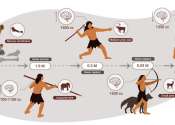Recording Roman resource exploitation and urban collapse
For hundreds of years, Carthage—the Phoenician city-state in North Africa—flourished, establishing itself as a robust trade empire with widespread colonies. As the Carthaginian and Roman empires expanded their reach across ...









